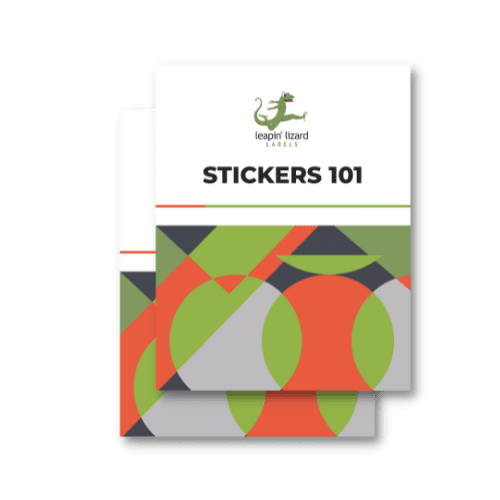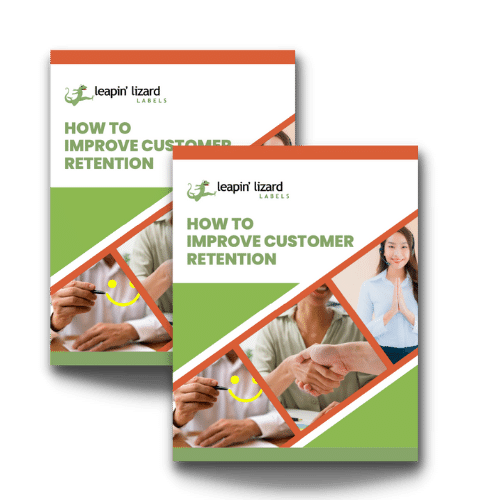In today's world, understanding food labels has become essential for making informed dietary choices, from deciphering the nutrition facts label to navigating health claims on food labels. The U.S. Food and Drug Administration (FDA) along with the United States Department of Agriculture (USDA) plays a pivotal role in ensuring that food products are safe, wholesome, and appropriately labeled, guiding consumers on their journey towards healthier eating habits [2][3]. Government intervention aims not only to safeguard human health and safety but also to support the agricultural and food manufacturing industries, and to sidestep international trade disputes, emphasizing the significance of accurate food labeling [4].
As you embark on this exploration of food labels, including front-of-package labels, nutrition labels for food, and food packaging labels, remember that labels are more than just stickers on your food package—they are a gateway to understanding what you consume [1]. Furthermore, in ensuring your labels meet legal standards and communicate effectively with your consumers, Leapin' Lizard Labels offers unparalleled label printing services tailored to meet your needs. This article will take you through the legal labyrinth of food labeling requirements, illuminate the key components of a compliant food label, and guide you in maintaining compliance while avoiding common pitfalls.
Understanding Food Labeling Requirements
Navigating the intricate world of food labeling requirements can feel like a maze, but fear not! Let's break it down into digestible bits, ensuring your labels are not only compliant but also a beacon of clarity for your consumers.
- Major Food Allergens & FALCPA:
- The Food Allergen Labeling and Consumer Protection Act (FALCPA) mandates clear identification of proteins from the eight major food allergens on labels.
- Did You Know? Sesame joined this list as the ninth major allergen in 2021, thanks to the FASTER Act. Starting January 1, 2023, sesame must be clearly labeled as well.
- Exemptions & Special Cases:
- FALCPA's reach is extensive, covering packaged foods, supplements, and more. However, it exempts items like fresh produce in their natural state, highly refined oils from major allergens, and certain non-food products.
- Pro Tip: Unsure if your product needs a special allergen label? Leapin' Lizard Labels can guide you through these murky waters, ensuring your labels are both compliant and eye-catching.
- Regulatory Oversight:
- The FDA and USDA share the responsibility of ensuring food safety and accurate labeling, with the FDA overseeing most foods and the USDA handling meat and poultry.
- Quick Fact: Unlike the USDA, the FDA does not pre-approve food labels but offers invaluable guidance documents to help you stay on the right track.
Key Components of a Compliant Food Label
Creating a compliant food label might seem daunting, but with Leapin' Lizard Labels by your side, it's a breeze! Let's dive into the key components that make up a compliant food label, ensuring your product stands out on the shelves while adhering to regulations:
- Principal Display Panel (PDP) Essentials:
- Product Identity: Bold and prominent lettering to state the food's identity clearly.
- Net Contents Statement: Positioned in the lower 30% of the PDP, with appropriate lettering size and buffer space.
- Country of Origin: Mandatory for imported products, following the Signature Line.
- Nutrition Facts and Ingredients:
- Layout and Graphic Requirements: Includes specific layout, footnotes based on package dimensions, and nutrient profile.
- Ingredients: Listed in descending order of predominance by weight, with lettering at least 1/16” in height.
- Allergen Statement: As bold as the Ingredient Statement, listing all "Big 8" allergens.
- Identification and Transparency:
- Manufacturer Information: Name, street address, city, state/province, and postal code of the responsible party.
- Ingredient Transparency: Ingredients, including sub-ingredients, listed clearly without abbreviations.
- Serving Size and Calories: Updated to reflect realistic consumption amounts, with bolded and larger font.
Leapin' Lizard Labels ensures your food labels are not only compliant but also capture the essence of your brand, making your products instantly recognizable and trusted by consumers.
Navigating Nutritional Information and Claims
Navigating nutritional information and claims on food labels can feel like decoding a complex puzzle, but with a bit of knowledge and Leapin' Lizard Labels' expertise in food labeling, you'll be a pro in no time! Here's a breakdown to help you understand the essentials:
- Understanding % Daily Value (%DV):
- What it Means: The %DV shows how much a nutrient in a serving of food contributes to your daily diet. It's a helpful way to gauge if a product is high or low in a specific nutrient.
- Quick Guide:
- 5% DV or less per serving is considered low.
- 20% DV or more per serving is considered high.
- Key Nutrients to Watch:
- Get More Of: Dietary Fiber, Vitamin D, Calcium, Iron, and Potassium. These are crucial for maintaining good health and preventing diseases.
- Get Less Of: Saturated Fat, Sodium, and Added Sugars. Reducing intake of these can help lower the risk of chronic diseases.
Leapin' Lizard Labels ensures that your food products not only meet the stringent requirements set by regulatory bodies but also communicate this nutritional information clearly and effectively to your consumers. By choosing us for your label printing needs, you're ensuring that your food labels are both informative and compliant, making it easier for your customers to make healthier choices.
Allergen Labeling and Special Dietary Needs
Navigating the world of allergen labeling and catering to special dietary needs can sometimes feel like a tightrope walk, but it's crucial for ensuring the safety and satisfaction of your customers. Here's a simplified breakdown to help you understand the requirements and how Leapin' Lizard Labels can assist in making your food labels compliant and clear:
- Major Food Allergens Identification:
- FALCPA Compliance: Foods must clearly label the eight major food allergens - milk, egg, fish, crustacean shellfish, tree nuts, wheat, peanuts, and soybeans.
- Specificity Required: The type of nut, fish, or crustacean shellfish must be listed to avoid any ambiguity.
- Labeling Formats:
- Ingredient List: The common name of the allergen followed by its food source in parentheses, e.g., albumin (egg).
- "Contains" Statement: An alternative approach where the allergen is listed after this word, making it immediately visible to consumers.
- Additional Labeling Insights:
- Plain English: Allergens must be listed in plain English, ensuring they are easily understood.
- Advisory Statements: While not required by FALCPA, including "May contain…" can inform consumers of potential cross-contamination.
- "Non-dairy" or "Dairy-free": These terms are not restricted by FALCPA, offering flexibility in product labeling.
Leapin' Lizard Labels excels in creating food labels that not only meet these stringent allergen labeling requirements but also resonate with your brand's ethos, ensuring your products are safe, compliant, and appealing to consumers with special dietary needs.
Organic, Non-GMO, and Other Certifications
When it comes to distinguishing your product in the market, certifications like Organic, Non-GMO, and others not only serve as badges of honor but also communicate trust and quality to your consumers. Understanding these certifications can help you better navigate the labeling requirements:
- Organic Certification Levels:
- 100% Organic: All ingredients and processing aids are organic.
- Organic: At least 95% of ingredients are organic.
- Made with Organic: Contains at least 70% organic ingredients.
- Non-GMO and Organic Distinctions:
- Non-GMO Project Verified: Ensures less than 0.9% of ingredients are genetically modified.
- USDA Organic Seal: Prohibits GMOs, toxic chemicals, and synthetic fertilizers.
- Note: All USDA organic foods are inherently non-GMO, but non-GMO foods can still contain toxic pesticides and may not be organic.
Leapin' Lizard Labels can be your partner in navigating these complex certification processes. We specialize in producing labels that not only meet the stringent requirements of these certifications but also resonate with your brand’s ethos. Whether it's showcasing your commitment to non-GMO ingredients or highlighting your product's organic quality, our label printing services ensure your product communicates its true value, clear and loud, to the consumers.
Maintaining Compliance and Avoiding Pitfalls
Maintaining compliance and avoiding pitfalls in food labeling is akin to navigating a constantly evolving landscape. Here's a streamlined approach to ensure your food labels remain compliant, clear, and consumer-friendly:
- Ingredients and Compliance:
- Order Matters: List ingredients in descending order by weight. This not only meets regulatory requirements but also helps consumers identify heart-healthy ingredients like whole-wheat and olive, canola, or avocado oil at a glance.
- Stay Informed and Updated: Regularly review regulations relevant to your product and market. Changes in product formulation or regulatory updates necessitate label revisions to avoid misleading consumers.
- Best Practices for Label Management:
- Seek Expertise: For specific concerns, professional guidance can clarify complex regulations.
- Audit and Review: Implement regular reviews of your labeling practices for ongoing compliance.
- Record Keeping: Maintain detailed records of labeling processes, from ingredient sourcing to final label printing.
- Choosing the Right Label Partner:
- Why Leapin' Lizard Labels?: Selecting a label manufacturer like Leapin' Lizard Labels ensures expertise in compliance, high-quality printing, and environmentally friendly options. Our services offer design assistance, customization, and quick turnarounds, making us a reliable partner in your labeling journey.
Implementing these strategies can significantly reduce the risk of non-compliance, ensuring your products remain safe and trustworthy in the eyes of consumers.
Using Leapin' Lizard Labels for Label Printing
When it comes to ensuring your food labels are not just compliant but also visually appealing, turning to Leapin' Lizard Labels for your label printing needs is a smart choice. Here's why:
- Customization and Variety:
- Offerings include custom labels, stickers, banners, window clings, and floor decals.
- Specialization in eco-friendly printing solutions.
- Wide range of label options catering to various industries such as food, beverage, health/beauty, and more.
- Ability to print labels in any color and custom shapes to fit your unique product packaging.
- Efficiency and Reliability:
- Quick turn-around time of five to seven business days, with options for rush printing and shipping.
- Guaranteed on-time shipping for orders up to $2,000.
- 1-hour quick quotes, ensuring a fast response to your needs.
- No set-up fees or minimum orders, making it accessible for businesses of all sizes.
- Support and Guidance:
- Free consultations with a dedicated team of Customer Success Representatives.
- Assistance with measuring containers for the perfect label fit.
- A materials page and quiz to help you choose the best materials for your product labeling needs.
- All artwork saved for easy re-orders, streamlining the process for future needs.
Choosing Leapin' Lizard Labels means partnering with a team that's committed to bringing your brand to life through high-quality, eco-friendly label printing services.
Conclusion
Understanding the intricacies of food labeling regulations is crucial for ensuring that your products meet legal standards and communicate effectively with consumers. By dissecting the various components, from allergen identification to organic and non-GMO certifications, this article has illuminated the path to compliance and highlighted how critical it is to stay informed and vigilant. With the support of Leapin' Lizard Labels, you have a reliable partner dedicated to making your label printing process seamless, ensuring that your labels not only comply with stringent regulations but also enhance your brand's visibility on the shelf. To ensure your food labels meet all regulatory requirements stylishly and sustainably, schedule a consultation for all of your food label printing needs.
Navigating the ever-evolving landscape of food labeling demands a strategic approach, emphasizing the significance of accurate, consumer-friendly labeling. Leapin' Lizard Labels stands as an invaluable asset in this journey, offering the expertise and technology necessary to produce labels that perfectly balance compliance with graphical allure. By choosing to partner with them, you open the door to endless possibilities for elevating your product's appeal while adhering to legal standards, thereby fostering trust and loyalty among your consumer base. This partnership promises not just compliance, but a competitive edge in the bustling marketplace.
FAQs
What are the essential elements required on a food label?
There are five fundamental elements that must be included on a food label:
- The name of the food product.
- The name and address of the manufacturer, packer, or distributor.
- The address of the place of business.
- A list of ingredients.
- The net quantity of the contents.
What are the key requirements for food product labeling?
Food product labels must prominently display several critical pieces of information, including:
- A complete list of ingredients and additives.
- Information on any allergens present.
- The product's expiration date or date of minimum durability.
- The alcoholic strength for products that contain alcohol.
- A nutrition facts declaration.
Which legislation mandates accurate food packaging labels?
The accurate labeling of food packages is primarily governed by two pieces of federal legislation: The Federal Food, Drug, and Cosmetic Act (FD&C Act) and the Fair Packaging and Labeling Act. These laws are enforced by the FDA, which also provides guidance to manufacturers, distributors, and importers on proper food labeling practices.
What are the compulsory labeling requirements for packaged food?
For packaged food, the labeling must comply with the FSSAI Labelling Guidelines and include the following information:





